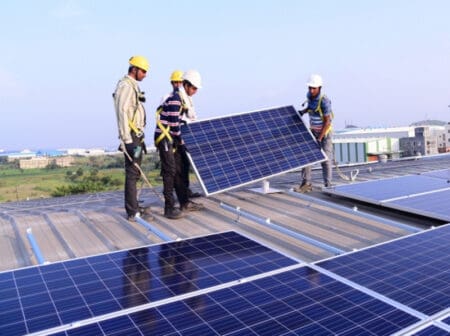
Several P2P energy trading pilots in India have demonstrated its effectiveness as a “superior market model” for promoting the adoption of rooftop solar, the India Smart Grid Federation (ISGF) has reported.
In a new white paper prepared in partnership with the Indian Energy Exchange and Australian blockchain pioneer Powerledger, the ISGF states that neither net or gross metering tariffs nor subsidies have led to the expected uptake of solar capacity, mainly due to low feed-in tariffs and unattractive yearly returns from the current market model.
In comparison, peer-to-peer (P2P) trading offers a financially attractive model for both prosumers as well as consumers in the domestic and C&I segment.
In addition, the distribution companies benefit when net metering customers switch to P2P, while the government subsidies, which are presently disbursed to install rooftop solar, can be avoided.
Have you read?
Blockchain a necessity for the distributed grid finds Global Smart Energy Federation
Why India’s start-ups are driving energy sector innovation
The white paper states that the significance of P2P energy trading in promoting rooftop solar has been recognised by the regulator of Uttar Pradesh, which has approved a new set of regulations to facilitate the seamless integration of rooftop solar with the grid.
This follows the implementation in 2020 of a blockchain-based P2P energy trading pilot in Uttar Pradesh by the ISGF and Powerledger, which has received overwhelming interest from multiple distribution companies across India keen to replicate similar projects in their respective regions.
Subsequently, other initiatives have been launched in Delhi and West Bengal among other states.
The white paper states that P2P and local energy markets create both the right market and price signals to boost the deployment of renewable energy assets, such as rooftop solar, to meet India’s national renewables targets of 2030 and beyond.
Some benefits highlighted that can be derived from P2P trading that have emerged from pilots in India include incentivising the deployment of rooftop solar, increasing the viability for net metering prosumers to switch to P2P and trade with C&I consumers and potentially offering higher revenue than gross metering to current subscribers.
Others are reducing the losses incurred by discoms through net metering, helping them to meet their renewable purchase obligation targets, reducing energy transfer on transmission corridors – and thereby deferring capex for the network – helping to remove subsidies for rooftop solar installations and addressing energy inequity by enabling consumers without rooftop solar to purchase green energy and be part of the renewable economy.
Moreover, the suitability of blockchain technology for both low-trust environments and high-information cost environments makes it ideal for the energy sector. With a secure and transparent record-keeping system supported by smart contracts, complex transactions can be automated, ensuring efficient and reliable energy transactions.
While most blockchain use cases are in finance, supply chain management, and identity management, it holds great promise for asset registries and energy trading platforms.








